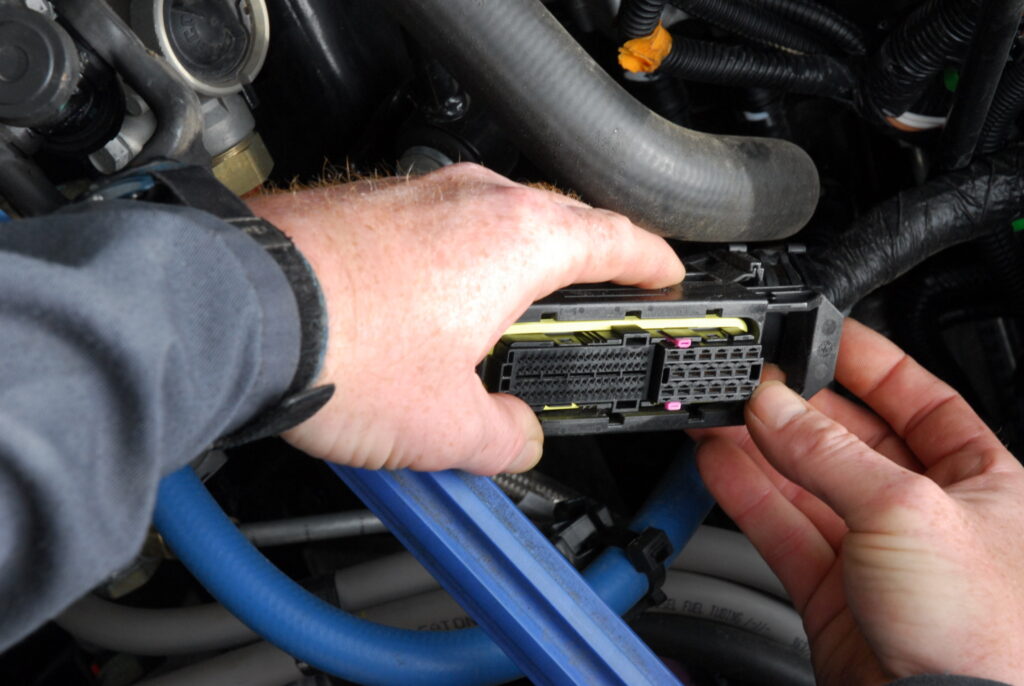5 tips to diagnose truck electrical problems
Diagnosing truck electrical issues can be like chasing ghosts in the machine. Just where is the source of the real problem? Here are five tips to help identify the root cause.
1. Check the fuse
After confirming the no-power condition at the load, confirm there is, in fact, power at the source. For tractors, the place to start is the fuse or breaker panel. Check the fuse for conductivity because it may be cracked rather than visually blown. For trailers, the place to start is the 7-pin connector (J-560) on the nose of the trailer.
Somewhere out there lies a graveyard full of perfectly good starters, alternators, and ABS modules that — for the want of proper diagnosis — would still be honorably serving their owners.
2. Use your eyes
Before spending hours testing pins, voltages, and modules, take a minute and visually inspect the harness that goes to the component in question. A visual inspection can reveal signs of rubbed or chafed cables or connectors.

3. Get a feel for the job
Use your hands and fingers as well as your multimeter. Many of today’s newer trucks and trailers use thin-gage wire that can break internally — inside the coating. This is especially true of unsupported wire or wire connected to a moving component such as an ABS wheel speed sensor.
While those break points cannot be seen, they can be felt by rubbing your fingers along the wire and feeling for a slight indent, says Jim Pinder, Erb Transport’s corporate fleet director. Carefully wiggling the harness in a manner similar to the movement it would experience on the road can help reveal the source of intermittent problems.
4. Learn to love your multimeter
Many of the features on modern multimeters are not well understood, so they’re underutilized. Techs sometimes get incorrect and unexpected readings because the device is set to ohms rather than volts, for example. Or the range isn’t properly set on non-auto-ranging devices.
To get the most from a multimeter, technicians need more than a basic knowledge of electrical theory. Understanding Ohms Law would be the bare minimum, says Tony DeGroot, Bison Transport’s manager of technical training and product development. “Technical colleges generally do a good job with multimeter training, but a refresher course for working techs never hurts.”
5. Load the circuit while testing
Simply illuminating the test light while doing a voltage check can be misleading. LED test lights will work on less than one volt. If you put a load on the circuit while testing, you’ll get a more accurate reading of the voltage after the load. Tools such as LOADPro’s dynamic test leads that connect to a multimeter can make a voltage drop test “on the fly” just by pressing a switch.
If you don’t have such a tool, use a halogen headlight in the circuit to provide the load, DeGroot suggests. You might get a proper resistance reading when checking a wire that has just one strand intact. But when you put a heavy load on that one strand of wire (the halogen headlight or the LOADPro), the light will not illuminate because that single strand cannot support the flow of power needed to light the light.
Have your say
This is a moderated forum. Comments will no longer be published unless they are accompanied by a first and last name and a verifiable email address. (Today's Trucking will not publish or share the email address.) Profane language and content deemed to be libelous, racist, or threatening in nature will not be published under any circumstances.